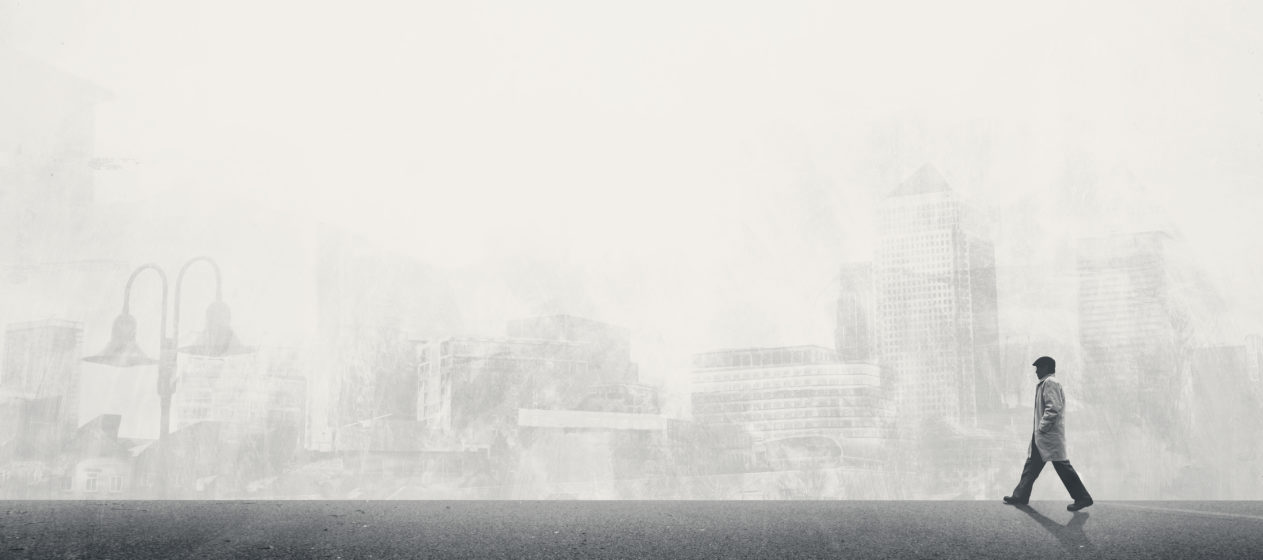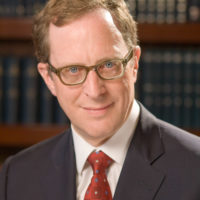In 2013, as two Fellows at New York University, we embarked on an “eruv tour” of Manhattan. Created through almost invisible strings attached to poles that envelope part of the city, this imaginary enclosure serves to delineate a religious space in which it is permissible to carry out the Jewish Sabbath. Today, we contemplate this almost invisible boundary running down Sixth Avenue with new appreciation of the insights it may yet bring to our current predicament as a pandemic of unprecedented proportions forces us to reinvent our common space, the boundaries which define it and the ways we can and should interact within it.
The eruv was introduced in Roman Palestine around 50AD for a Jewish community where many of the daily activities were performed in the shared courtyard, which was deemed a public space. To overcome the prohibition to carry objects in such public spaces during the Sabbath, an “eruv” was created in order to enclose these commons and join the inhabitants in an imaginary private space. The rabbis teach that in addition to the wire enclosure, each inhabitant had to donate food to a common dish. The creation of the small neighbourhood eruv allowed for social interaction and was dependent on the participation of the whole courtyard community. In time, the size of eruvin grew to entire towns around Europe and later the United States. “Imaginary” enclosures everywhere transformed public spaces into private ones, including large swaths of Manhattan, the busiest city on earth.
Could it be that we are now learning to treat as private what was previously considered public space, much as the rabbinic eruv has done for the past fifteen hundred years? The model of the eruv and its magical power for observant Jews may yet help secular societies at large think through the complexities of transforming public spaces into safe “user friendly” ones. As if we needed reminding that social space is always imagined and negotiated.
While the eruv was imagined in order to wave prohibitions, our new Corona social space is about introducing prohibitions to a public arena we once travelled with little care or concern. And unlike the eruv, the rules apply to all. But like the eruv, our new shared space is meant to allow for interaction against the background of prohibition. This is a newly legislated space where we must all consider each other as a potential ‘carrier’ and therefore constrain the way we interact. In many cities around the world, one must imperatively respect social distancing and not go outside without a mask or travel beyond a given radius of one’s home, for specifically listed reasons. So like the eruv, we are reimagining our social space in order to avoid being quarantined.
Yet, like the eruv, this new theatre of interaction requires the participation of everyone in the community. These limits do not work if they are simply dictated by those in positions of authority. Instead, they need to be internalized by each of us. If one person fails to abide by the rules, the space is no longer safe and therefore no longer shared. How ironic that a shared space redefined for greater distancing requires the same level of communal participation and cooperation as the eruv of old, defined in the first place to allow for greater interaction.
Yet, is it really ironic? The ability to share space is a right that we usually take for granted. Public space is by definition free and available to all of us. Of course, we have to be law abiding citizens in that space, but not for the sake of maintaining the space itself. The pandemic reminds us that classical liberalism, the idea that people should be free to do what they want so long as they don’t harm others, is not enough. Instead we must contend with the old message of the eruv, that public space carries with it responsibilities and a communal set of rules. While concerns for the environment have long been debated, dealing with viral infection here and now offers a radical reminder that with rights come responsibility.
When we finally find ourselves on the ‘day after,’ it may be that religious and secular interrogations about our commons enter a new fruitful conversation. For one, workers cannot return safely to the factory, employees to the office, storekeepers to the shops if even a few of us ignore the responsibility of being part of the “community”, a community that recognizes that empathy for self and for the other are intrinsically linked.
Recalling the special value of the eruv for women in the Jewish community, who were thus enabled to carry out their business, we will ask about inequalities of access and recognize the invisible contributions to our common space made by often unrecognized members of our communities.
We will recognize the value of shared green spaces for those who have none of their own. And we will ask about the ways the modern technological equivalent of invisible strings tied to polls – such as apps and data indicating that a space is ‘safe’ – can help empower individuals within our future commons rather than curtail their freedoms from above. The Eruvian age will offer an ethics of horizontal mutuality rather than vertical imposition.
Further afield, we will need to reconsider the ways we have allowed for the creation of distance with refugees locked down at our borders without the corresponding care we are now associating with our reinvented public spaces.
We look forward to returning together to the eruv on Manhattan’s Sixth Avenue, newly appreciative of the empathy and compassion that shared space creates for each of us.








